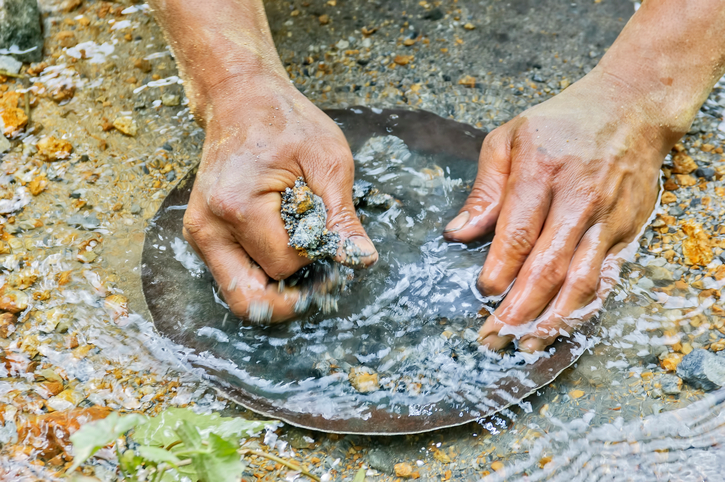Where is it best to pan for gold? Well, there are better geographical locations, but even once you’re at a specific stream, there are better and worse places for gold to collect at that location. Here are some quick tips when it comes to identifying the best parts of a stream or river to pan for gold.
Low Pressure Areas
When a stream or river bends, curves, or quickly widens, you can be left with what are called low-pressure areas. These areas still see water wash over them, carrying the same goods down from the exposed cliffs and mountains that deeper sections of the river will see. The difference in low pressure areas is that you’ll see more likelihood of collection. Gold sinks more easily when it’s not being swept away by stronger currents. Where a river sees less flow, that’s a good place to start panning for gold.
Rocks and Obstacles
Any place there’s a sudden obstacle or rougher terrain will stop gold. Tight rock groupings that still offer nooks and crannies will often start the sifting process for you, raking solid elements out of the water as it passes. Areas where a stream has a smoother bottom, such as a bedrock shelf, won’t do you as much good. There’s nothing in the smooth areas to disrupt and pick out what the water’s carrying, and that means gold will just continue downriver at the water’s speed.
Clay Layering
Indicators like clay under a top layer of stone can be a great sign that the river’s holding gold. If that clay comes apart easily and can be broken apart, it’s a great place to start looking for gold. On the other hand, if that clay is compacted and near impossible to penetrate, it’s not going to hold much. The consistency of that deposit matters.
For these and other tips for gold panning in California, why not plan a trip to Roaring Camp Mining Co. and get trained in panning for gold? It’s a fun activity whether on your own or with your family, and it can be profitable, too! We still operate a gold mine and many of our guests have left richer than they came!


It makes sense that a low-pressure section of a river will be the best place to pan for gold it’s able to sink when it’s not exposed to strong currents. My uncle and I have been interested in visiting a river near his house to look for gold, but we don’t have the right equipment for the job. We’ll make sure that we find high-quality equipment that we can use in low-pressure areas.